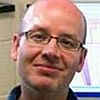|
|
|
|
|
|
|
|
| |
  
Steven M. Woolley,
David Posada and
Keith A. Crandall. A Comparison of Phylogenetic Network Methods Using Computer Simulation. In PLoS ONE, Vol. 3(4):e1913, 2008.
Keywords: abstract network, distance between networks, evaluation, median network, MedianJoining, minimum spanning network, NeighborNet, parsimony, phylogenetic network, phylogeny, Program Arlequin, Program CombineTrees, Program Network, Program SHRUB, Program SplitsTree, Program TCS, split decomposition.
Note: http://dx.doi.org/10.1371/journal.pone.0001913.
Toggle abstract
"Background: We present a series of simulation studies that explore the relative performance of several phylogenetic network approaches (statistical parsimony, split decomposition, union of maximum parsimony trees, neighbor-net, simulated history recombination upper bound, median-joining, reduced median joining and minimum spanning network) compared to standard tree approaches (neighbor-joining and maximum parsimony) in the presence and absence of recombination. Principal Findings: In the absence of recombination, all methods recovered the correct topology and branch lengths nearly all of the time when the subtitution rate was low, except for minimum spanning networks, which did considerably worse. At a higher substitution rate, maximum parsimony and union of maximum parsimony trees were the most accurate. With recombination, the ability to infer the correct topology was halved for all methods and no method could accurately estimate branch lengths. Conclusions: Our results highlight the need for more accurate phylogenetic network methods and the importance of detecting and accounting for recombination in phylogenetic studies. Furthermore, we provide useful information for choosing a network algorithm and a framework in which to evaluate improvements to existing methods and novel algorithms developed in the future. © 2008 Woolley et al."
|
|
|
|
|
|
| |
|
| |
  
David Posada,
Keith A. Crandall and
Edward C. Holmes. Recombination in Evolutionary Genomics. In ARG, Vol. 36:75-97, 2002.
Keywords: phylogenetic network, phylogeny, recombination, recombination detection, survey.
Note: http://dx.doi.org/10.1146/annurev.genet.36.040202.111115.
Toggle abstract
"Recombination can be a dominant force in shaping genomes and associated phenotypes. To better understand the impact of recombination on genomic evolution, we need to be able to identify recombination in aligned sequences. We review bioinformatic approaches for detecting recombination and measuring recombination rates. We also examine the impact of recombination on the reconstruction of evolutionary histories and the estimation of population genetic parameters. Finally, we review the role of recombination in the evolutionary history of bacteria, viruses, and human mitochondria. We conclude by highlighting a number of areas for future development of tools to help quantify the role of recombination in genomic evolution."
|
|
|
|
|
|
| |
 
David Posada and
Keith A. Crandall. Intraspecific gene genealogies: trees grafting into networks. In TEE, Vol. 16(1):37-45, 2001.
Keywords: likelihood, median network, netting, parsimony, phylogenetic network, phylogeny, Program Arlequin, Program SplitsTree, Program T REX, Program TCS, pyramid, reticulogram, split decomposition, statistical parsimony, survey.
Note: http://darwin.uvigo.es/download/papers/09.networks01.pdf.
|
|
|
|
|
|
| |
  
Mark Clement,
David Posada and
Keith A. Crandall. TCS: a computer program to estimate gene genealogies. In MOLE, Vol. 9:1657-1659, 2000.
Keywords: from sequences, parsimony, phylogenetic network, phylogeny, Program TCS, reconstruction, software, statistical parsimony.
Note: http://darwin.uvigo.es/download/papers/08.tcs00.pdf.
Toggle abstract
[No abstract available]
|
|
| |
  
Alan R. Templeton,
Keith A. Crandall and
Charles F. Sing. A Cladistic Analysis of Phenotypic Associations With Haplotypes Inferred From Restriction Endonuclease Mapping and DNA Sequence Data. III. Cladogram Estimation. In GEN, Vol. 132:619-633, 2000.
Keywords: from sequences, parsimony, phylogenetic network, phylogeny, Program TCS, recombination, reconstruction, statistical parsimony.
Note: http://www.genetics.org/cgi/content/abstract/132/2/619.
|
|
|
|
 - forked on GitHub.
- forked on GitHub.





